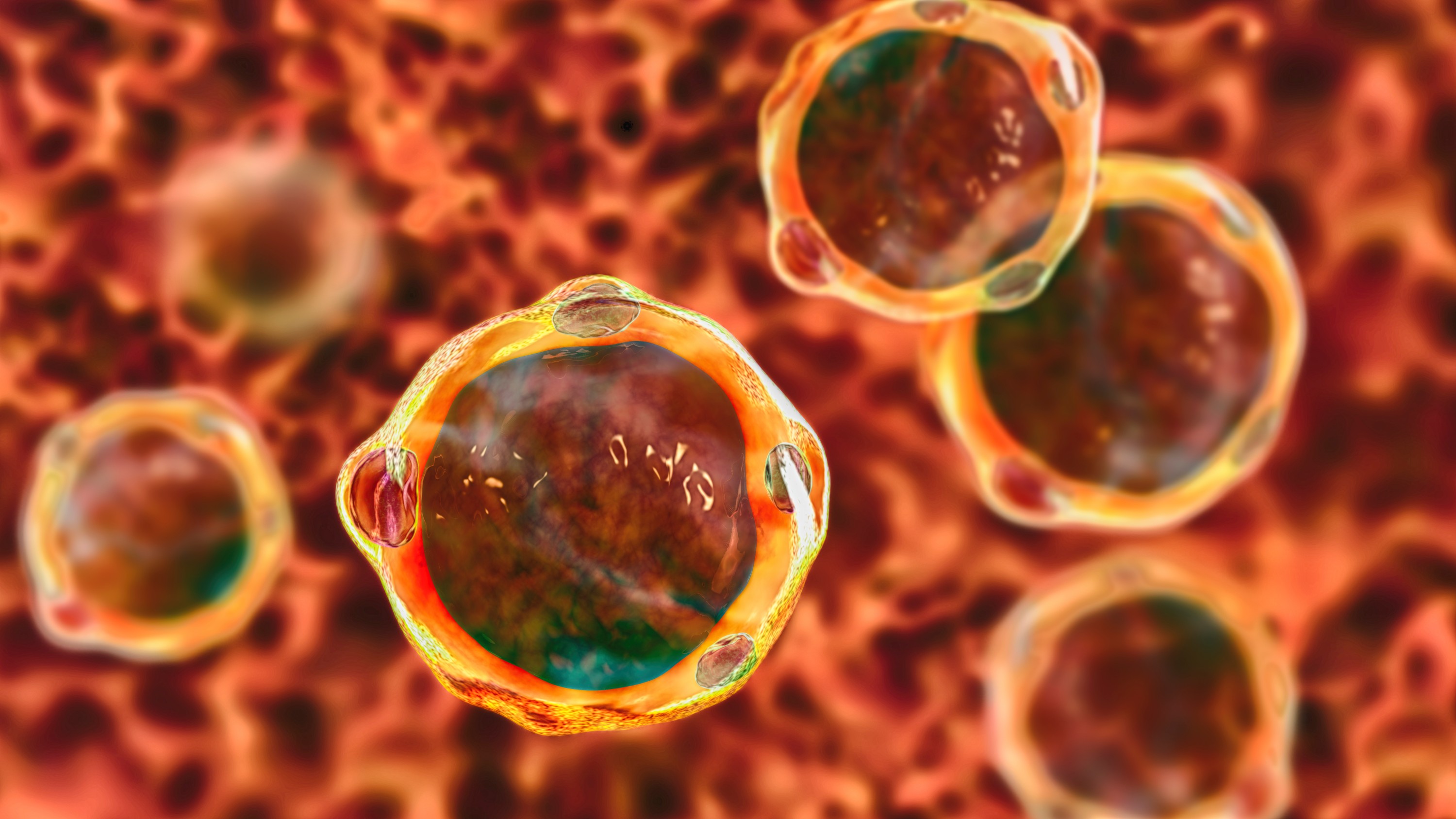Blastocystis is one of the most common microbes found in our guts but its role in human health is poorly understood. Blastocystis infection can lead to diarrhea, nausea, weight loss and fatigue, yet the microbe’s presence is also considered by some as a sign of a healthy gut.
“One in six people on the planet have it and we don't know if it can hurt you or not. Probably we should know how this thing works,” says Joel Dacks, professor of infectious diseases in the Faculty of Medicine & Dentistry and co-lead on new research published in Current Biology that seeks to illuminate the evolutionary biology of Blastocystis.
“We understand that the gut microbiome is an incredible modulator of human health. When it is healthy it seems to be quite protective, but when it's dysregulated it causes all manner of problems,” says Dacks, who is also an adjunct professor of biological sciences in the Faculty of Science.
Dacks co-led an international research team along with Anastasios Tsaousis, principal investigator of the Laboratory of Molecular and Evolutionary Parasitology in the School of Biosciences at the University of Kent in the U.K., seeking to understand how and why Blastocystis seems to be following an evolutionary path toward thriving in the oxygen-free environment of our guts — a path similar to that already taken by other parasites, such as those that cause vaginitis, amebic dysentery and beaver fever.
“They've all gone through this process, so by studying the different parasites independently, kind of like a historian, you can understand if there is something in common,” Dacks explains. “What are the greater forces? How does the shift happen? What happens to the cells and the genomes?
“Parasites are interesting because they're important to human health — and also because they're wonderfully weird.”
Important — and weird
Blastocystis is a eukaryote, or cell with a nucleus, much like those found in human bodies and plants. It is a member of the Stramenopila, a group of organisms that includes algae, kelp and the water mould Phytophthora infestans, which caused the Irish Potato Famine. Stramenopila are descended from organisms that have specialized hair-like structures on their flagella that help them move around in liquid, although Blastocystis no longer has any. It looks more like a tennis ball under a microscope. Blastocystis is transmitted from person to person through contact with infected feces or contaminated water.
To study the evolution of Blastocystis, the team compared it with its very close relative, Proteromonas lacertae, which lives in the guts of reptiles and still has many of the cellular features of the Stramenopila group, and by so doing were able to reveal several important discoveries.
For example, only three genes had previously been proposed as being responsible for flagella. By comparing the gene sequences of the two related microbes, the team identified nearly 40 genes that could possibly play a role. These can now be narrowed down in future studies by deactivating them out one at a time.
“We were able to open up an avenue of investigation into a fundamental structure in these organisms that have massive global impact, such as diatoms, which are responsible for about 30 per cent of the oxygen production on the planet, or mycetes, which are still serious crop pathogens,” Dacks says.
In general, the researchers found Blastocystis has lost many of the genes from its common ancestor with Proteromonaslacertae as it has specialized to live in the human intestine. Another function both microbes had been thought to have lost over time is that of peroxisomes, parts of a cell involved with metabolism. As expected, the team found no traces of peroxisomes in Blastocystis; however, by developing antibodies to test for them, they did uncover traces of peroxisomes in P. lacertae. Again, this is a discovery that will need further investigation to be better understood, says Dacks.
“As far as we're aware, this is the most reduced form of this organelle that has ever been reported,” he says. “This looks like a missing link in the degenerative evolutionary process. Now the question is whether there are other organisms out there that show something similar.”
Still more to learn
The research team also uncovered new evidence of evolutionary changes in the two microbes’ membrane trafficking systems, which allow cells to move fuel, waste and other cargo in, around and out of the cell, much like a mail sorting system. This is the Dacks’ lab’s area of specialty, and he suggests the new information may help scientists understand how Blastocystis takes up material from its human host.
Dacks notes there is still much more to be learned about Blastocystis and its impact on human health. He points out that at least 12 subtypes of the microbe have now been identified in humans.
“It's possible that some of them are making people sick and some of them aren't, but we've been calling them the same thing,” he says. “The other possibility is that under some conditions it’s fine, but when you stress the environment, then it can cause disease.”
This effect is much like what happens to ocean coral, where symbiotic algae are healthy for the coral until ocean temperatures rise and changes to the algae result in coral bleaching and ultimately death, Dacks explains.
Dacks’ research for the paper was funded by the Natural Sciences and Engineering Research Council of Canada and The Royal Society, and one of his students listed as a co-author on the publication was supported by a Vanier Canada Graduate Scholarship. Dacks is a member of the Women and Children’s Health Research Institute and was Canada Research Chair in Evolutionary Cell Biology from 2011 to 2021.
